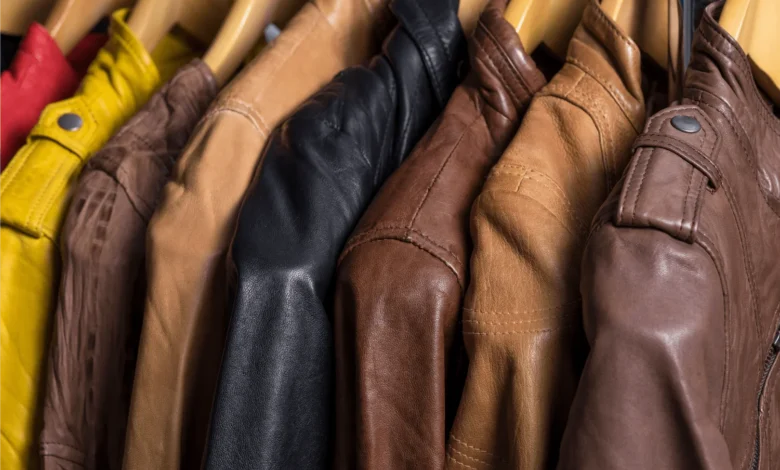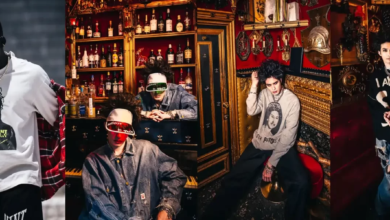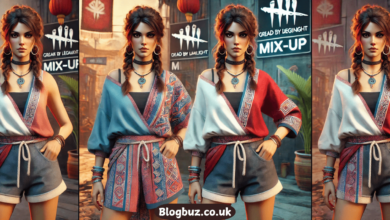How To Dye Leather Jackets And Aprons | A Detailed Guide

Dyeing leather is a great way to refresh an old jacket or give a custom look to an apron. Whether you want to restore faded color or try something new, the process requires careful steps to get the best results. In the USA, many leather enthusiasts prefer dyeing their jackets instead of replacing them, as it saves money and allows customization.
A reliable leather blacksmith apron also looks better and lasts longer when dyed properly, especially when exposed to daily wear and tear. Choosing the right dye, preparing the leather, and following the correct steps will ensure an even and long-lasting finish. This guide will walk you through everything you need to know to dye your leather jackets and aprons safely and effectively.
Selection of the Right Dye
The type of dye you choose plays a major role in how your leather jacket or apron will look and feel after the process. Here are some dye types:
Water-Based Dyes:
These are ideal for leather jackets as they provide a smooth and even color while keeping the leather soft and flexible. They also have a milder odor and are easier to work with. Since they don’t penetrate as deeply as alcohol-based dyes, they allow for better color layering and adjustments. However, they may require a sealant to prevent fading over time.
Oil-Based Dyes:
These provide rich and long-lasting colors while keeping the leather moisturized. They work well for jackets that need a soft and glossy finish. Because of their oil content, they penetrate deep into the leather, making the color more resistant to cracking or drying out. They are also excellent for enhancing the natural grain of the leather.
Natural Leather Dyes:
If you prefer a chemical-free option, natural dyes made from plants like tea, coffee, or walnut husks are a great choice. They take longer to develop but create unique, earthy tones. These dyes are environmentally friendly and reduce exposure to harsh chemicals, making them safer for DIY projects.
Safety Precautions
Dyeing leather involves chemicals that can be harmful if not handled properly. To stay safe, follow these steps:
Work in a Ventilated Area
Dyes contain strong fumes that can be harmful when inhaled. Always work in a space with open windows or use a fan to keep air circulating. Outdoor spaces are even better.
Wear Protective Gear
- Gloves: Protect your hands from stains and irritation.
- Mask: If using alcohol-based dyes, a mask helps reduce inhalation of strong fumes.
- Apron or Old Clothes: Leather dye is permanent, so wear something you don’t mind getting stained.
Protect Your Workspace
Cover your working surface with newspapers, plastic sheets, or an old cloth to prevent accidental spills. Leather dyes can stain floors and tables permanently. Alcohol-based dyes are flammable, so avoid working near open flames, stoves, or cigarettes.
Leather Dyeing Techniques
Here are some different leather dyeing techniques that you can use depending on the type of finish you want:
Brushing Method
The brushing method is ideal for small areas or detailed work, making it a great choice for adding touch-ups or custom designs on leather jackets and aprons. Using a soft brush or sponge, apply the dye in circular motions to avoid streaks and uneven patches. This method allows for better control over the color intensity, as you can layer the dye gradually.
It works well for fixing faded spots or creating unique patterns on a jacket. However, since it requires patience and precision, it’s not the best option for large surfaces like full aprons. Let each thin layer dry completely before adding another to prevent smudging or uneven absorption.
Spraying Method
The spraying method provides an even and smooth finish, making it a preferred technique for dyeing leather jackets without streaks. A spray gun or airbrush tool is required to mist the dye onto the leather, ensuring a professional-looking result. This method is excellent for jackets because it maintains the leather’s flexibility and prevents stiffness.
Spraying also allows for a gradient or faded effect, which is popular in fashion leatherwear. For aprons, this technique can be used to achieve a soft, uniform tone without excessive buildup. However, proper ventilation is important, and using light coats prevents over-saturation or dripping.
Dipping Method
The dipping method is best for achieving full and deep color coverage, making it highly effective for practical leather aprons that require a rich, uniform look. The entire leather piece is submerged in a dye bath, ensuring that every part absorbs the color evenly. This technique quickly darkens the leather, so monitoring the time is essential to avoid over-darkening.
It’s a great option for aprons used in heavy-duty tasks, as it results in a bold, long-lasting color. However, this method is not ideal for jackets unless you want a completely solid shade without variations. Since dipping can cause leather to absorb excess moisture, conditioning afterward helps restore its softness.
Drying and Sealing
Once the dye has been applied, proper drying and sealing are important to lock in the color. Here are the proper steps:
Air Dry the Leather
After dyeing, let the leather air dry naturally in a shaded area to prevent color fading or uneven absorption. Avoid placing it in direct sunlight, as UV rays can alter the dye’s intensity and cause premature fading. Drying time varies depending on the type of dye used, ranging from a few hours to a full day. Placing the leather in a well-ventilated space speeds up the process while maintaining its softness and flexibility.
Apply a Leather Finish
Sealing the dyed leather with a leather finisher helps lock in the color and prevents it from rubbing off onto clothing or hands. Depending on your preference, you can choose a matte or glossy finish to enhance the final look.
Buffing
Once the sealant is dry, gently buff the leather using a soft, dry cloth to enhance its texture and shine. Buffing evens out the surface, removing any slight roughness caused by the dyeing process. This step also brings out the natural beauty of the leather, making jackets look polished and aprons appear well-maintained.
Care After Dyeing
Follow these care tips to keep dyed leather items looking good:
- Water can cause dyed leather to fade or bleed. If your jacket or apron gets wet, pat it dry immediately with a soft cloth.
- Apply a leather conditioner every few months to keep the material soft and prevent cracks. This is especially important for jackets exposed to frequent wear.
- Keep jackets on padded hangers to maintain shape.
- Store aprons in a dry area to prevent moisture damage.
- Avoid plastic bags, as they trap moisture and cause mold.
Conclusion
Dyeing leather jackets and aprons is a great way to customize or refresh their look. Whether you choose synthetic or natural leather dyes, following the right leather dyeing techniques and taking proper safety precautions will ensure a smooth, long-lasting finish.
Taking your time with preparation steps and using the correct drying and sealing methods will help you get professional-looking results. By avoiding common mistakes and caring for your leather properly, you can enjoy a beautifully dyed jacket or apron that lasts for years.




